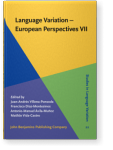Chapter 7
ASPA Tools or how to measure foreign-accentedness and
intelligibility in an objective manner
Dialectometry has traditionally been examined from the
perspective of the dialects and accents of a single
language or related languages. However, foreign accents
still remain understudied within this paradigm (see
section 2 and Wieling
et al. 2014 for an exception).
In this chapter we present ASPA Tools (Accented-Speech
Phonetic Alignment), a web application which measures
phonetic distances between foreign-accented speech and a
standard pronunciation. Unlike similar instruments (Visual
DialectoMetry or Gabmap), ASPA Tools measures the degree
of intelligibility of non-native English speech in
relation to English as a Lingua Franca (ELF).
We use Multiple Sequence Alignment (MSA) and two variations of
the Levenshtein Distance (LD) to examine the pronunciation
of a group of speakers and compare it to a given ELF
standard. Furthermore, ASPA Tools objectively measures the
prototypical pronunciation of the group, which allows
researchers to analyse the most salient deviations from
the ELF standard.
Article outline
- 1.Introduction
- 2.Existent dialectometric tools
- 3.English as a Lingua Franca (ELF) and the Lingua Franca
Core (LFC)
- 4.Prototype Theory applied to (foreign) accents
- 5.Technical characteristics of ASPA Tools
- 5.1Input/Output data
- 5.2Algorithms
- 6.Conclusions and future perspectives
-
Notes
-
References
